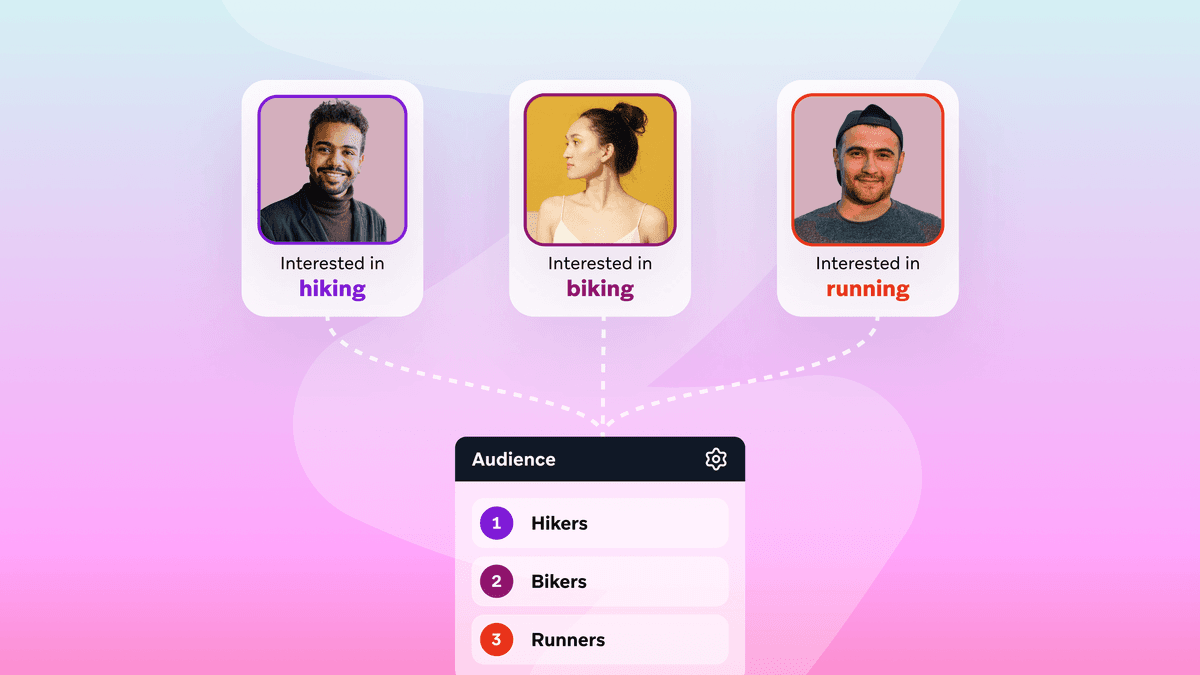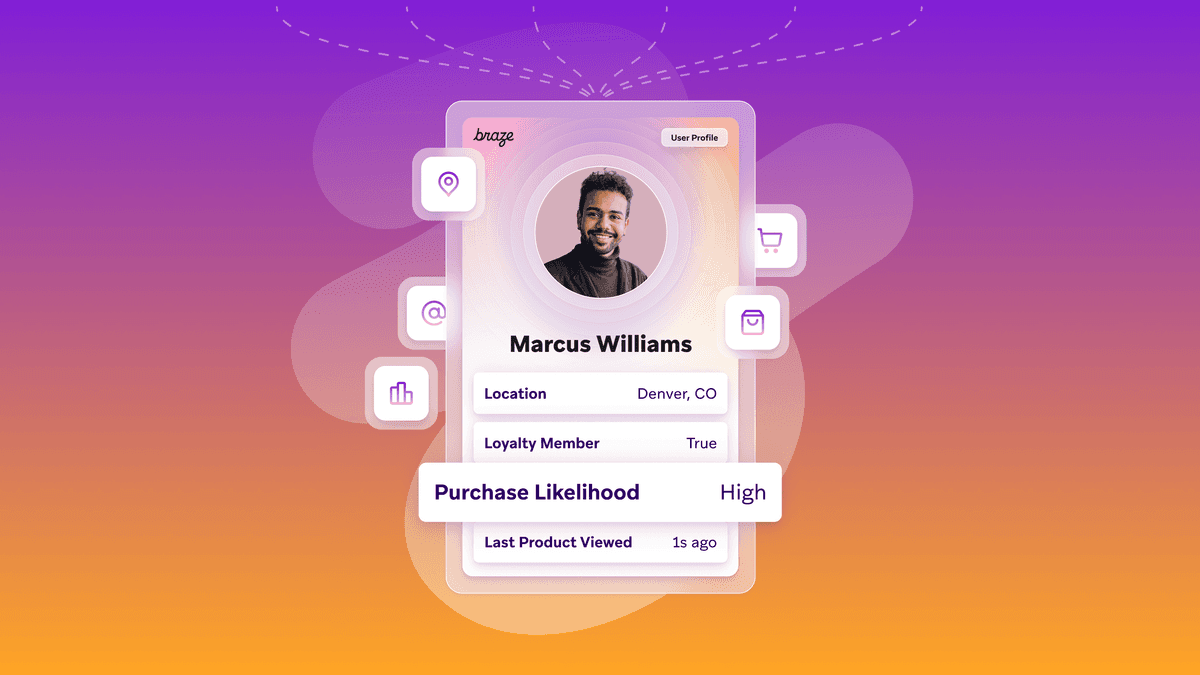What’s a Triggered Message?
Published on June 03, 2020/Last edited on June 03, 2020/8 min read


Team Braze
Since the first iPhone was announced back in 2007, we’ve seen major, ongoing changes to the customer engagement landscape. New channels for communicating with consumers. New ways of understanding how customers are engaging with your brand. And new expectations from individual users about how brands can and should interact with them.
With so many of today’s consumers engaging with the brands they patronize on a more frequent basis and across a variety of different platforms and devices, marketers have a lot more opportunities to reach them with effective customer engagement. By the same token, it also creates a lot of opportunities for brands to send irrelevant or out of date messages if they aren’t using the tools and tactics available to them to keep their outreach responsive. One way to make that happen is by making smart use of triggered messages.
What Are Triggered Messages?
A triggered message is a kind of outreach (e.g. email, push notification, etc.) that is sent in direct response to an action taken by the message recipient—for instance, opening your brand’s app or making a purchase.
How Can Triggered Messages Help Support Better Marketing?
At their core, triggered messages are a way for brands to use the data at their disposal about their customers and how they’re engaging digitally to improve their messaging. When used in a thoughtful way, triggered messages make it possible for marketers to leverage marketing automation to provide more relevant and meaningful brand experiences to their customers.
Think about how much a knowledgeable, friendly salesperson with good timing can do to improve the shopping experience in a brick and mortar shop. They say hello when you walk into the store, but they also know to let you explore. When you signal real interest in a particular item or type of product, that’s when they’ll follow up and ask if they can help with anything or let you know about a relevant promotion. In a digital context, triggered messages can do much the same thing, creating a messaging experience that’s relevant to each customer and responsive to the signals they’re giving as they give them.
According to Braze research, triggered messaging is more likely to be opened than time-based messages (that is, communications set to be delivered at a pre-selected date and time). In fact, triggered emails are 59% more likely to be opened by time-based emails, representing a significant amplification of the impact of outreach sent in this messaging channel.
Where Did Triggered Messaging Come From?
Brands have been collecting information on how people interact with their marketing efforts for a very long time. Way back in the early 20th century, pioneering marketers like Robert Collier and Claude Hopkins developed direct response advertising by placing ads in newspapers and giving readers coupons to respond or sending letters to past customers to invite them to reorder. These systems may seem basic today, but they were significant advances for the time and worked quite well.
Beginning in the early days of the internet—and then accelerating with the rise of mobile—the advent of connected devices like computers and smartphones made it possible for brands to more accurately collect information that helped them understand their users (and those users’ behaviors) in nuanced, actionable ways. And with better data, it became possible to deliver much more specific, relevant messages—including by tying message delivery to trackable user actions.
Today, technology has made this kind of messaging easier than ever before, but the landscape that brands are operating in has fundamentally changed. Over the past few years, we’ve seen increasing scrutiny from governments and consumers alike when it comes to companies’ collection and use of personal data from individuals—and laws like the EU’s General Data Protection Regulation (GDPR) and the California Consumer Privacy Act (CCPA) have made collecting consumer data, a key input for sending the right triggered message, more fraught and more challenging for marketers.
That said, these new challenges don’t undermine the value of triggered messages and other marketing automation tools and tactics—they just highlight the importance of taking a thoughtful, human-first approach to customer engagement. Today’s consumers expect to have their wishes and feelings honored by the brands they patronize; to make that happen and still see the value that triggered messages can provide, you need to educate your audience about why you’re collecting the information you’re collecting and how you’ll use it to give them a better, more relevant experience.
How Can Marketers Send Triggered Messages?
Assuming that your data collection is on point and you have a customer engagement platform at your disposal that’s built to be able to support action-based message triggering in real time, you’ll likely need to carry out the following steps:
- Choose a Trigger Event: Look for situations where communicating quickly after a given action or event will make a user’s experience better—for instance, sending push notification with delivery time information as soon as someone places an order—and use message triggers to make that responsiveness a reality.
- Compose Your Message: Make sure the message you plan to send is directly relevant to the trigger you’ve chosen and consider using personalization to ensure that the message is more likely to speak to each recipient and their individual situation and preferences.
- Pick a Message Delay and Identify any Exception Events: Every message has a goal and sometimes that goal will be accomplished even if the message is never sent (e.g. a user coming back to an abandoned shopping cart and completing a purchase); given that, consider building in a delay before messages are sent to give customers the opportunity to take action on their own and use exceptions events to cancel triggered messages aimed at people who have already taken the step you’re nudging them about.
Can You Share Some Uses Cases Where Triggered Messages Can Add Value?
While every brand is going to have its own unique audience and goals, there are some common campaigns where leveraging triggered messages can do a lot to provide customers with a better experience of your brand, regardless of what industry you’re in:
1. New User Onboarding
When a user first downloads your app, that’s a unique opportunity to drive engagement. They’re probably excited and curious to see what your app can do for them, which makes it the perfect time to guide users around your features. In this case, you’d use a time-based trigger combined with the app install date (e.g. “Send 1 day after first session”). You may also trigger different messages based on how a given user does or doesn’t engage with certain features as a way to provide more relevant encouragement along the way.
2. Targeting Highly Engaged Users
It’s pretty common for brands to find that a small subset of their audience is significantly more engaged than the rest (think mobile gaming whales). Over time, your brand may determine that there are key actions that signal a given user is on the cusp of becoming a highly-engaged super user—for instance, browsing your app’s loyalty program sign-up page. By triggering messages with promotions or encouragement to nudge them to take that next step when they reach that key threshold, you can convince more users to up their engagement and become even more valuable to your brand.
3. Re-Engaging Lapsing Users
At the other end of the engagement spectrum, you’ll likely have customers whose engagement with your brand has plateaued or begun to decline. Unless you find ways to encourage these users to engage more frequently, you run the risk of seeing them uninstall your app or otherwise drop out of sight. With triggered messages, you can automatically send them outreach when they hit disengagement milestones (e.g. 14 days with no sessions), ensuring that they don’t just drop off without an effort to re-engage them.
4. Encourage Abandoned Cart Purchase Completion
According to Statista, nearly 70% of all digital shopping carts are abandoned by shoppers. That can happen for all kinds of reasons, but knowing that the customer was interested enough to add items to their cart in the first place makes them a promising target for follow-up outreach that can potentially encourage them to finish that purchase and boost your bottom line. Because some shoppers will come back on their own, consider testing different delay lengths when triggering messages to see what the optimal amount of time is for following up.
Anything Else?
While message triggers are a powerful marketing automation tool, they’re ultimately just one part of an effective messaging campaign. To get the information you need to develop a cohesive consumer experience filled with valuable, personal, and revenue-driving messages, check out our exclusive cross-channel guide.
Related Tags
Be Absolutely Engaging.™
Sign up for regular updates from Braze.



